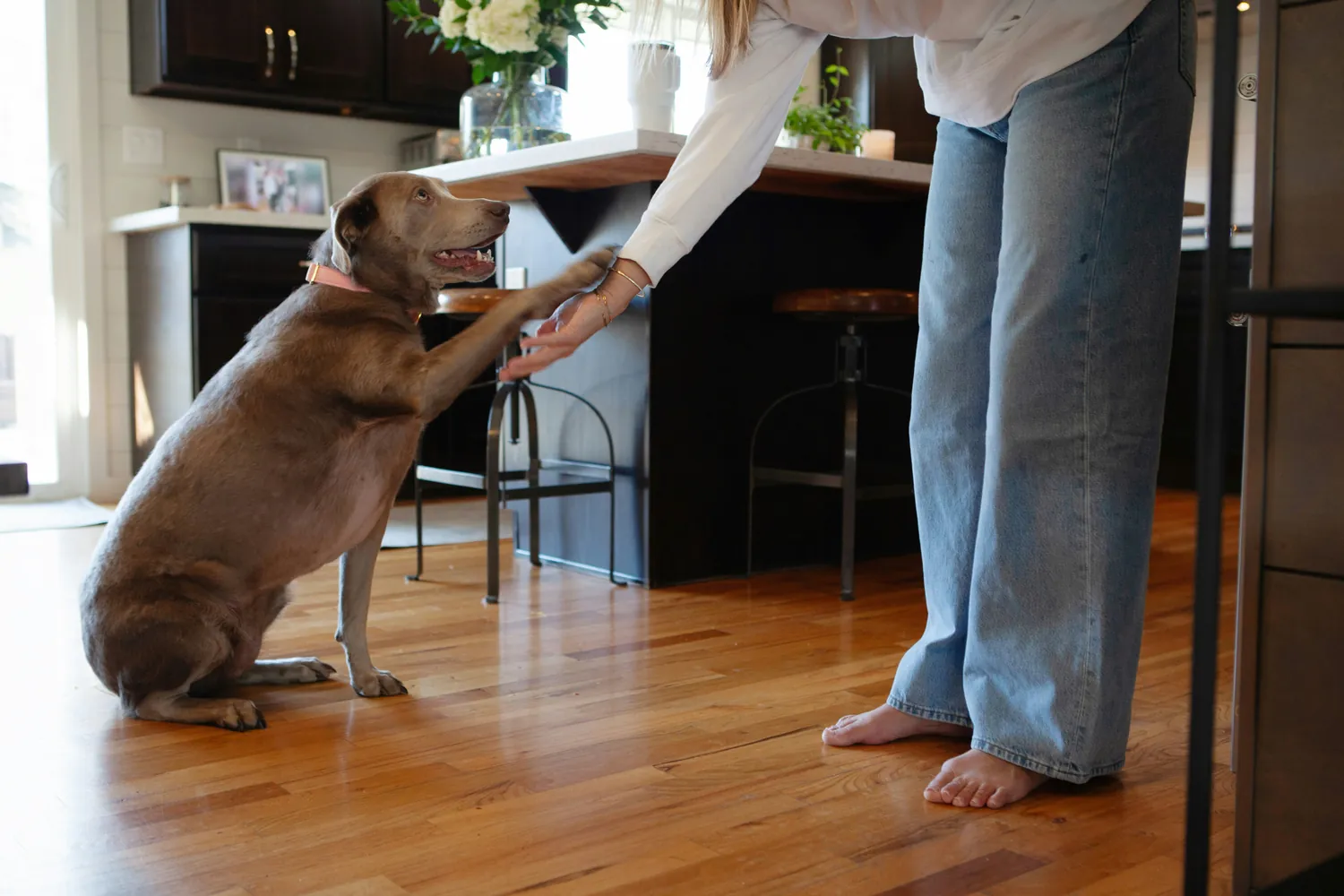How to Read Your Dog's Body Signals for Better Bonds

Understanding Canine Communication: The Basics
Dogs, much like humans, communicate through a complex mix of body signals. While they may not have the power of speech, their bodies speak volumes if we're attentive enough to listen. Understanding these signals is crucial for strengthening your bond with your furry companion.
In this article, we'll dive deep into interpreting these signals, empowering you to understand and respond appropriately to your dog's needs, emotions, and cues.
Recognizing Signs of Happiness
Happy dogs often display specific body language that is unmistakable once you know what to look for. Here are some common signs:
- Wagging Tail: A wagging tail generally indicates happiness, but it's important to pay attention to its position and speed. A low wagging tail usually signals friendliness and contentment, while a high tail may indicate excitement or assertiveness.
- Relaxed Ears: When a dog’s ears are in their natural position, neither forward nor back, it signifies calmness and happiness.
- Bouncy Movements: A dog that's happy may move around energetically, showing enthusiasm and playfulness.
Understanding these signs can help reinforce positive interactions with your pet. Encouraging these behaviors with treats or playtime can further solidify your bond.
Scenario: Meeting New People
Imagine you're at a park and someone new approaches. A happy dog might approach them with a wagging tail and relaxed ears. You should acknowledge this behavior by allowing a positive interaction with the newcomer, helping your dog feel secure and content.
Decoding Stress and Anxiety
Just as it's important to recognize happiness, it's equally crucial to identify when your dog is stressed or anxious. Stress signals can help you intervene early, preventing potential behavioral issues.
- Panting: While panting can indicate heat or exertion, excessive panting in a calm environment can be a stress indicator.
- Tucked Tail: A tail tucked between the legs is often a clear sign of fear or anxiety.
- Avoidance Behavior: If your dog suddenly avoids eye contact or turns away from something or someone, it might be feeling stressed.
By recognizing these signs, you can take steps to alleviate your dog's stress. Remove them from the stressful situation and offer comfort or distraction with toys or treats.
Scenario: Visiting the Vet
Your dog might show stress signals such as a tucked tail or excessive panting in a vet's waiting room. To ease their anxiety, bring along a favorite toy or blanket, providing familiarity and comfort in an unfamiliar setting.
The Importance of Eye Contact
Eye contact can be a powerful tool in dog communication, but it's nuanced:
- Soft Eyes: A dog with soft eyes and relaxed eyebrows typically feels safe and calm.
- Direct Stare: Prolonged direct eye contact can be a sign of aggression or dominance in dogs. It's best to avoid staring back directly.
Using eye contact wisely helps establish trust. Gently meeting your dog's gaze during calm moments can reinforce your bond without threatening them.
Practical Tip: Establishing Trust Through Eye Contact
Spend quiet time with your dog each day. Use calm eye contact paired with gentle strokes to build trust. This practice strengthens emotional connection over time.
Barking and Vocalizations
While body language is critical, vocalizations also play an important role in how dogs communicate:
- Barking: Different types of barks can signal various emotions - excitement, alarm, boredom, or even frustration.
- Whining: This often indicates a need or desire for something, like food or attention.
Recognizing these vocal cues alongside body language provides a fuller picture of what your dog is communicating.
Practical Tip: Responding to Vocal Cues
If your dog is barking excessively due to excitement when someone rings the doorbell, calmly redirect their focus with a command they know well, like ‘sit’ or ‘stay.’ Reward compliance to reinforce desired behavior.
Playful vs. Aggressive Behavior
Differentiating between playful and aggressive behavior is crucial for safe interactions with other dogs and people:
- Play Bow: This is when a dog stretches its front legs out in front of it while keeping its rear end up - a universal sign of wanting to play.
- Raised Hackles: Raised hair along the back may suggest aggression or anxiety; it's a warning sign that should not be ignored.
Observing these cues during dog-dog interactions can prevent potential conflicts before they escalate.
Scenario: Dog Park Etiquette
At a dog park, watch for play bows as invitations for friendly play. Conversely, keep an eye out for raised hackles that could indicate tension. Proactive intervention can prevent altercations by guiding your dog towards more compatible playmates.
Checklist for Reading Your Dog's Body Language
- Observe overall body posture: Is it relaxed or tense?
- Check tail position and movement: What's being conveyed through its wag?
- Notice ear position: Are they perked up, laid back, or relaxed?
- Monitor vocalizations: What does each sound mean?
This checklist serves as a quick reference for daily interactions, helping you become more attuned to your dog's emotional state.
The Impact of Understanding on Your Relationship
A deep understanding of canine body language fosters stronger bonds between you and your dog. By recognizing their needs and responding appropriately, you create an environment of mutual respect and trust.
The insights gained from observing body signals are invaluable in everyday life—from providing comfort during thunderstorms to enhancing joy during playtime. Ultimately, reading these signals ensures both you and your pet enjoy a harmonious relationship filled with understanding and love.
